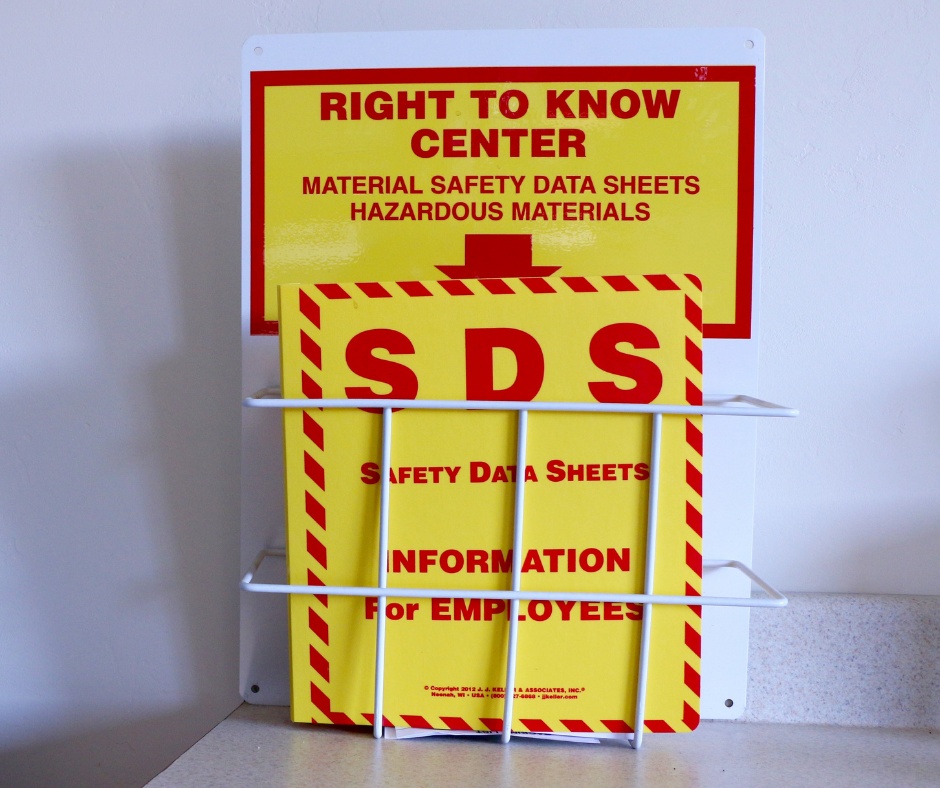Your SDS Guide

Material Safety Data Sheets (MSDS) have long been in use as the standard hazard communications platforms that accompany chemicals and volatile items in transit – commonly used by chemical manufacturers & distributors as a means of notifying handlers and end users of any potential hazards.
However, a recent review of the Hazard Communications Standards has led to the adoption of a Safety Data Sheet (SDS) as the new official documentation. Traditionally, MSDSs were the official documents that detailed the dangers of the product, warnings to heed and how the cargo should be handled to guarantee safe transport. MSDSs were also structured to contain information on storage conditions and the specification on how the specific chemicals were to be disposed of. With the review, SDSs have been adopted as the globally recognized data sheets for potentially hazardous materials.
Reviewing the SDS
SDS sheets have been adopted with the global setting in mind. With MSDS, the variations and types of document structure were plenty, leaving some disparity in information relay and understanding. SDSs were brought in as the set units that are acceptable globally and can be interpreted by all parties. The Globally Harmonized System of labeling and classification of chemicals (GHS) dictated the use of SDSs as the internationally accepted communication. Chemical manufacturers and distributors are required to initiate the shift from MSDS to SDS and, consequently, update their databases accordingly. There is no need to document both the MSDS and SDS sheets as both serve the same purpose, but chemicals previously identified under MSDS have to be updated to reflect the globally accepted standard.
The Structure of the SDS
As an international communication platform, SDS sheets have 16 sections that detail everything one would need to know about the chemical or hazardous product. The sections are set for the handlers at specific stages of transit to aid them in understanding what they are dealing with and the precautions to take in case of an emergency. The sections are:
- Identification: The name of the chemical, recommended use and the restrictions on its usage will be communicated. This section includes the name, contact number and address of the manufacturer and the transit handlers, including emergency numbers in case of exposure.
- Hazard Indentification: Information on the toxicity level of the chemical is communicated including the concentration, classification and precautionary measures to be taken. Lists the Hazard Communications Pictograms.
- Ingredient Composition: This section includes the ingredient identifiers for substances, including impurities and additives meant to stabilize the chemical. Mixtures require the same information as substances, including the chemical name and concentration for all ingredients that are classified as health hazards. These chemical concentration percentages must be exact, except in instances where a trade secret claim is made, there is no batch-to-batch variation or the SDS is used for a group of substantially similar mixtures.
- First Aid Measures: Lists the immediate medical measures to be taken including specialized attention given. A description of symptoms and measures to be taken in accordance with the exposed part of the body are also provided including effects of delayed response.
- Fire Fighting Measures: Includes information on the protective equipment to be used and potential hazards to expect from the combustion of the chemicals. Communication on the suitable properties for an extinguisher is also made available.
- Accidental Exposure Measures: Lists personal and industrial precautions including emergency responses in case of release coupled with the materials and procedures for cleaning up and containing the chemical.
- Handling and Storage: Provides precautions for safe storage and handling including other incompatible chemicals.
- Exposure Controls/Personal Protection: Details the Permissible Exposure Limit and the Threshold Limit Value coupled with the protection measures and equipment for the different levels of exposure.
- Physical and Chemical Properties: Lists the physical state, color and odor with an emphasis on the pH, solubility and flammability.
- Stability and Reactivity: Includes the stability and hazardous response of the chemical coupled with the reactivity and incompatible elements that may trigger an imbalance in the chemical composition.
- Toxicological Information: Details the toxicology of the chemicals including information on how to identify the symptoms of effects due to exposure coupled with the possible exposure routes whether contact, ingestion or inhalation.
- Ecological Details: Degradability of the chemical and its biohazard potential is detailed coupled with its ecotoxicity.
- Disposal Considerations: Information is provided on methods and measures to be taken when disposing including packaging the waste.
- Transport Information: Data is provided on UN shipping name and number including capacity during transit and special precautions.
- Regulatory Information: Environmental measures and health regulations are given for the chemical.
- Additional Information and Details: The batch number and the last date of revision are detailed including the preparation date for transportation.
Who Handles SDS
Chemical manufacturers, transportation agents and distributors of the chemicals will be responsible for handling Safety Data Sheets and ensure that the chemicals and hazardous elements are properly handled.
Understanding the SDS
The different sections of a Safety Data Sheet are designed for the different individuals and corporations that may handle or store the chemical. Occupational hygienists and safety professionals who handle the chemical will want to pay close attention to the technical sections, while emergency responders focus on sections 4, 5 & 6 and storage personnel target sections 1, 7 and 10.
If making the management of hazardous material simple, safe and effective is among your top priorities, consider reaching out to the industry experts at Transportation Compliance Association. Our hazmat training programs are designed to give your team the “hands-on” experience they need to keep safe on the job. Don’t leave your employees vulnerable to various risks and dangers of the job. Contact one of our hazmat consultants today to design an accurate training program for your company.





